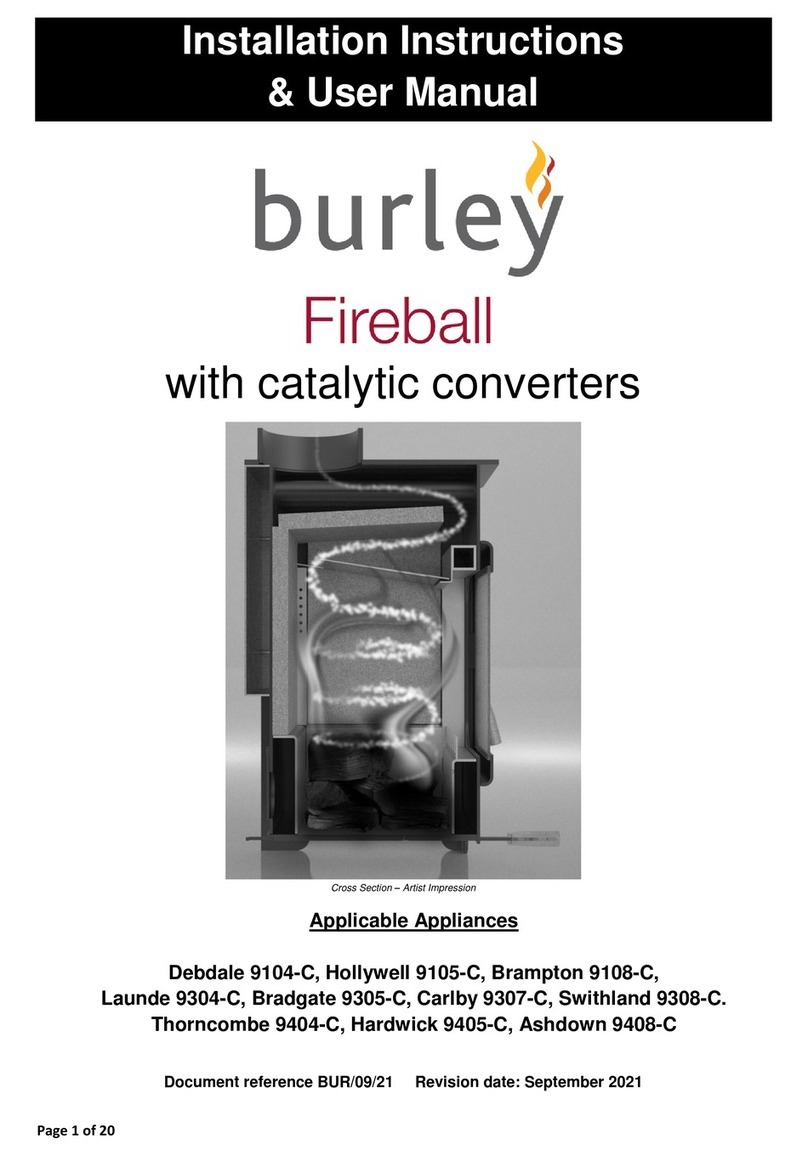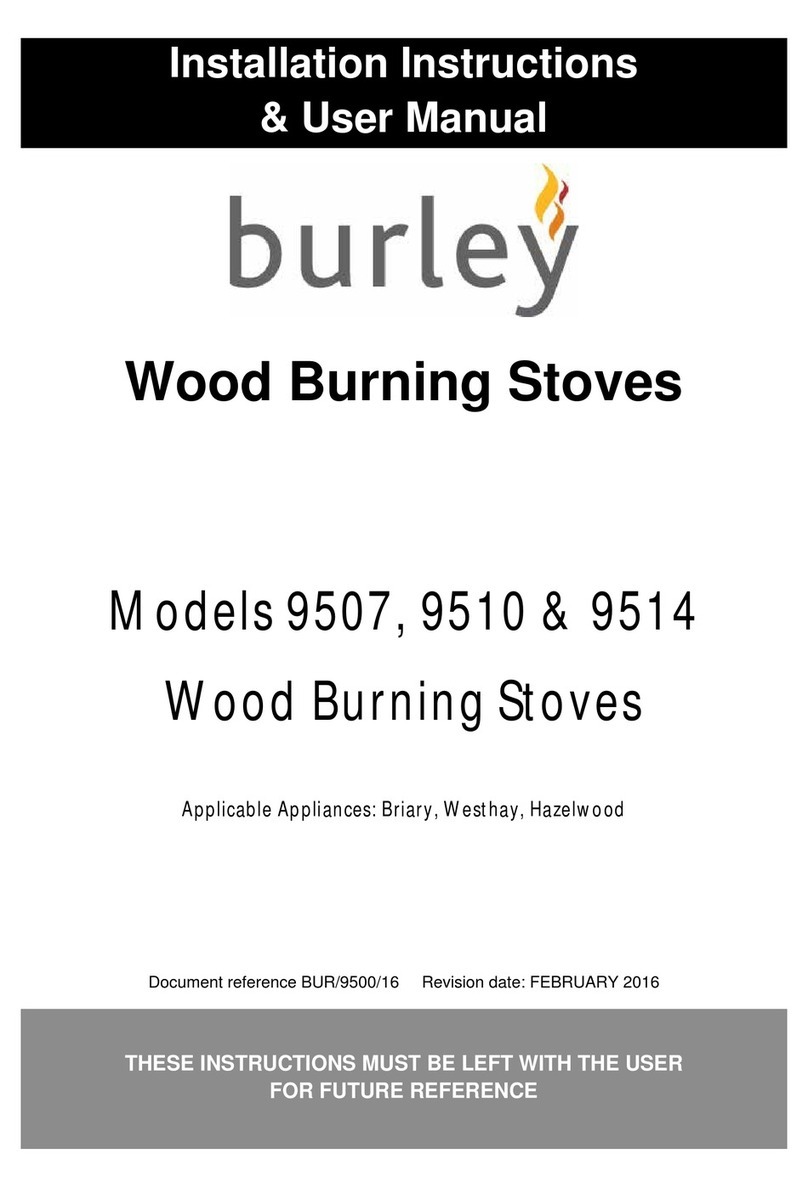Page 2 of 20
Table of Contents
Approvals .......................................................................................................................................4
TECHNICAL DATA .........................................................................................................................5
Stove Dimensions..........................................................................................................................6
Installation Instructions.................................................................................................................7
The Clean Air Act 1993 and Smoke Control Areas .....................................................................7
Chimneys, Flues, Hearths and Surrounds...................................................................................8
Air Supply and Room Sealing Kit...............................................................................................10
Door Handle Assembly................................................................................................................11
Assembly and Installation of the Stove Fire Bricks and Baffle................................................12
Fitting of Stove Bricks.................................................................................................................12
Log Retaining Bar........................................................................................................................12
Fitting the optional base(s).........................................................................................................12
Commissioning the Appliance....................................................................................................13
USER INSTRUCTIONS.................................................................................................................13
To Light the Stove........................................................................................................................13
Using the Moisture Meter............................................................................................................14
Stove Thermometers - DO NOT USE WITH OUR STOVES ...............................................15
Care of Glass................................................................................................................................15
Troubleshooting/Poor Appliance Operation..............................................................................16
Reasons for Premature Wear of Internal Parts..........................................................................17
Chimney Sweeping and Maintenance........................................................................................17
Safety............................................................................................................................................18
Warranty .......................................................................................................................................18
If you need further help…............................................................................................................18
Spare Parts...................................................................................................................................19
Customer & Installation Notes....................................................................................................20
PLEASE CAREFULLY CHECK YOUR STOVE FOR DAMAGE
OR DEFECTS PRIOR TO FITTING.
WE CAN NOT EXCHANGE DAMAGED OR FAULTY
STOVES THAT HAVE BEEN FITTED.
































